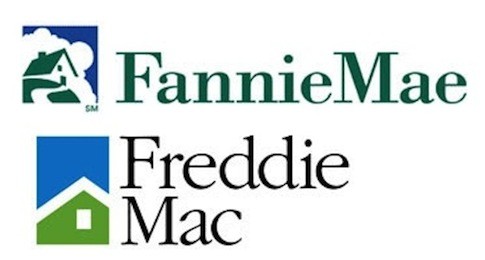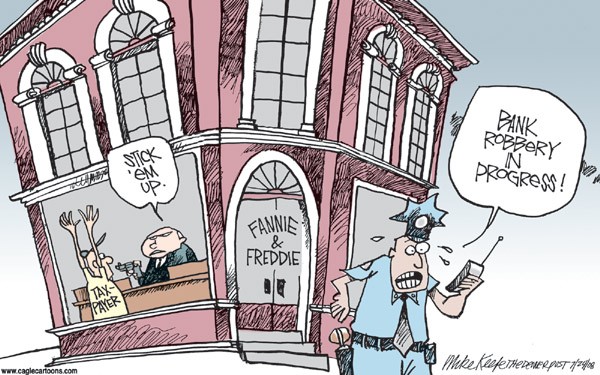Fannie Mae & Freddie Mac
Post on: 13 Октябрь, 2015 No Comment

20Mae%20Freddie%20Mac%20House%20Burning.jpg /%
The Federal National Mortgage Association — better known as Fannie Mae — was established in 1938 as part of President Franklin Delano Roosevelt’s New Deal legislation. Just like the recent financial crisis, the Great Depression saw a spike in mortgage defaults. Roosevelt’s belief was that if he could help increase liquidity in the mortgage market by buying loans from banks, the economy would pick up.
Similarly, the Federal Home Loan Mortgage — Freddie Mac — was created in 1968 as a government-sponsored entity. Like Fannie Mae, Freddie Mac was created to increase liquidity in the mortgage market. As Kate Pickert of Time puts it, Freddie Mac was launched primarily to keep Fannie Mae from functioning as a monopoly.
Fannie Mae and Freddie Mac do not lend directly to home-purchasers. Instead, Fannie and Freddie are in the business of loan securitization. They buy loans from banks, bundle them and resell the loans to investors. One key point is that Fannie Mae and Freddie Mac guarantee the securities — that is, if the loans underlying the newly created securities go bad, both Fannie and Freddie will step in to make sure the investors are made whole.
This last point, of course, became an issue during the financial crisis. As previously mentioned, Fannie Mae and Freddie Mac are considered government-sponsored enterprises (GSEs). Although both were, before the crisis, privately financed, the general sentiment was that in the event of a crisis in the mortgage market, the federal government would step in and back the GSEs. In other words, the government implicitly guaranteed Fannie and Freddie’s securitized loans. This allowed them to borrow at interest rates below those of the financial markets and to hold much lower capital requirements than commercial and investment banks. The aggregate value of this subsidy has been estimated to range somewhere between $119 billion and $164 billion, of which shareholders receive respectively between $50 and $97 billion. Astonishingly, the subsidy was almost equal to the market value of these two GSEs.

As a result, by the time the housing crisis began to unfold, Fannie and Freddie had become the dominating force in the secondary mortgage market, providing 75 percent of financing for new mortgages through securitization at the end of 2007. At the end of 2010, they still held about 50 percent of securitized, first-lien home loans.
The GSE’s government guarantee became explicit when the federal government took over Fannie and Freddie in 2008 in response to the financial crisis. By November 2010, Fannie Mae and Freddie Mac cost the taxpayers close to $150 billion ; final estimates from that time have the total cost anywhere from $400 billion to $1 trillion. Meanwhile, debates continue to rage as to whether the government should have ever been involved in the home-mortgage market in the first place.
This topic page includes information related to Fannie Mae and Freddie Mac’s origins, their role in the current crisis as well as their place in the U.S. government’s housing policy history.














